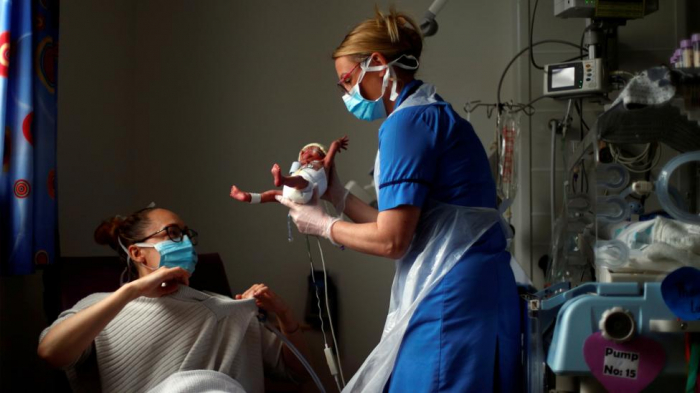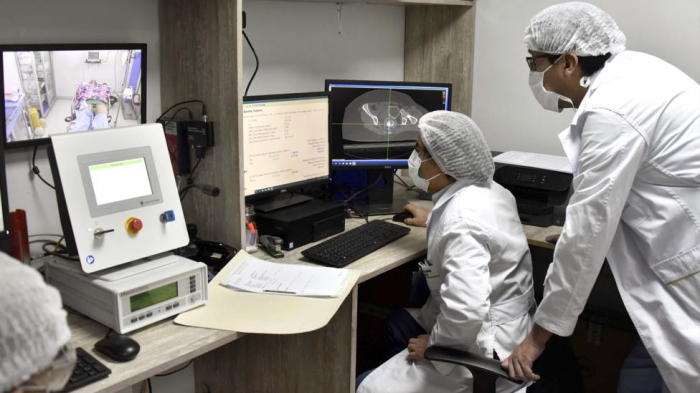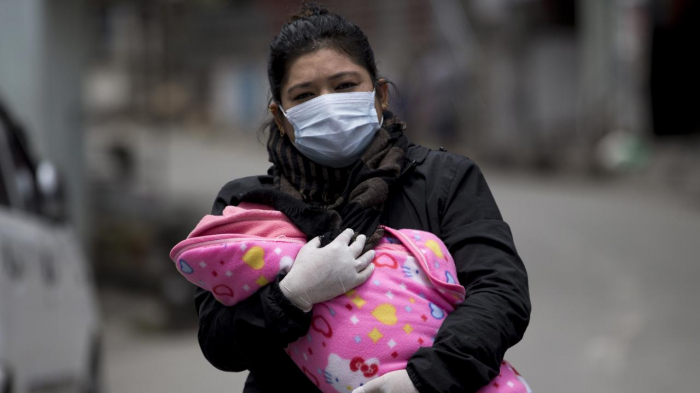From a famine of “biblical” proportions to a deluge of undiagnosed cancers, while we’re all worrying about the coronavirus, most fatalities could be collateral damage.
It all began with a large hollow tree.
Two-year-old Emile Ouamouno had been fond of playing inside the tree, which was near his home in Meliandou – a village in the heart of the Guinean jungle. But other life had also discovered its cosy confines: bats. Children would sometimes catch them there, before roasting them for dinner.
Then Emile got sick. On the 28 December 2013, he succumbed to a violent and mysterious illness. His mother, sister and grandmother were next. And that was it – after the funeral, the disease gradually began to spread.
By 23 March 2014, there had been 49 cases and 29 deaths – and scientists confirmed that it was Ebola. Over the next three and a half years, the world looked on in horror as the virus claimed more than 11,325 lives. But while this was going on, another tragedy was unfolding.
The outbreak severely strained the resources of local healthcare services – workers died, large numbers of hospitals closed and those that remained open were overwhelmed with tackling Ebola itself. In the three most affected countries – Sierra Leone, Liberia and Guinea – people began avoiding healthcare at all costs. They were afraid of this mysterious new disease, but they were also fearful of doctors. With their sinister white protective overalls and association with sudden death, healthcare workers had become heavily stigmatised. People didn’t want to go near them.
As a result, a 2017 analysis found that the pandemic led to a dramatic drop in the popularity of medical care. The number of pregnant women seeking help with childbirth was down by 80%, vaccination rates plummeted and there were 40% fewer admissions of children with malaria. Ironically, after an intense international effort to combat the pandemic, this collateral damage was more severe than the disease itself.

Over a million children and 56,700 mothers are at risk from the side-effects of the pandemic (Credit: Getty Images)
In 2020, the world risks watching a similar scenario unfold.
Early on, many nations were keen to reassure the public about the ways Covid-19 was being prioritised – beds and ventilators were ringfenced, unproven treatments were stockpiled and doctors were re-assigned to respiratory wards in their thousands. In the UK, the government pledged to provide everything the health service needed to cope with the pandemic, “whatever it costs”.
Similar steps were taken in countries around the world as they fought to tackle the rising infection rates. Anything considered non-urgent was delayed or cut back, from certain surgeries to sexual health services, stop smoking programmes, mental health support, dentistry, vaccinations, cancer screenings, and routine check-ups.
It turns out all these things are important – there’s no such thing as a “spare” doctor or superfluous medical discipline after all. As a result, this intense focus on a single foe has already had some harrowing side-effects. (Read more about how doctors have chosen which patients to prioritise.)
Across the globe, patients have reported being denied cancer care, kidney dialysis and urgent transplant surgeries, with sometimes fatal results. In the Balkans, women have been driven to try dangerous, experimental abortions themselves, while experts in the UK have reported a rise in DIY dentistry, as people turn to toe-curling improvisations involving chewing gum, wire-cutters, and superglue. Panic-hoarding of the drug hydroxychloroquin, which is normally used to treat malaria and autoimmune conditions, and has recently been found to increase deaths from Covid-19, has led to shortages.
And as with all crises, the current pandemic looks set to hit the poorest countries the hardest. Scientists have warned that, in some places, disruption to the control of diseases such as HIV, tuberculosis and malaria could lead to losses on the same scale as those caused directly by the virus. Similarly, experts fear that deaths from illnesses such as cholera could far exceed those from Covid-19 itself.
Vaccinations are a particular concern. The World Health Organization has calculated that at least 80 million children under the age of one are now at risk of diptheria, polio and measles, after the pandemic disrupted programmes in at least 68 countries. Polio is expected to make a comeback, despite a multi-billion dollar effort stretching back decades which meant it was tantalisingly close to joining the exclusive club of viruses that are extinct in the wild, whose sole member is currently smallpox.
Meanwhile, David Beasley, executive director of the United Nations’ World Food Programme (WFP), warned last month that the world is teetering on the edge of a famine of “biblical” proportions – with 130 million people at risk of starvation, on top of the 135 million who are already on the brink.
Finally, it's thought that the global lockdowns and subsequent economic turmoil could increase so-called deaths of despair, as some people resort to alcoholism or suicide.

Polio is expected to make a comeback, despite a multi-billion dollar effort to make it extinct (Credit: Getty Images)
What is the true scale of the collateral damage caused by Covid-19 – and what can we do to stop it?
For the epidemiologist Timothy Roberton, together with colleagues from Johns Hopkins University, Maryland, the side-effects of the pandemic became a concern almost as soon as it started. “A lot of us looked at the response to the Ebola outbreak in West Africa in 2014, so we knew what might happen,” he says.
In particular, the team was interested in how Covid-19 could affect women and children in low-income countries, such as those in Sub-Saharan Africa. They modelled the impact of several scenarios of increasing severity, and identified two main ways that the response to Covid-19 could increase the number of casualties.
One is through the disruption of health services. “So, for example, that might be because people are too afraid to seek help – the demand side,” says Roberton. And then there's the supply side – health care workers might be sick themselves, they might be diverted to work on the pandemic, or there might be shortages of medicines.”
Another looming problem is families not having access to enough food, which can increase their susceptibility to infectious diseases.
In all, the scientists predicted that in a worst-case scenario, where the use of health services is reduced by up to 50% and malnourishment is boosted by the same amount, over a million children and 56,700 mothers could die as an indirect result of the pandemic. Most of the child fatalities would be from pneumonia or dehydration due to diarrhoea, while for the women, they would probably be due to complications from pregnancy or childbirth – haemorrhages, eclampsia, and sepsis. “What we were looking at is if they don’t get treatment for these things – if children don’t get oral rehydration or mothers don’t get antibiotics,” says Roberton.
When these deaths are added to the number at risk from famines, the toll really begins to add up. The WFP is currently providing food to nearly 100 million people every single day – and of that number, around 30 million depend on them for their very survival. According to their analysis, 300,000 people could starve to death each day in the coming months, if their ability to provide this normal support is disrupted. That’s not including those who are newly impoverished by the pandemic itself.
“If you look at the big picture, the world thought it was doing pretty well and the numbers of hungry people in the world were coming down,” says Jane Howard, who is head of communications at WFP. She explains that in the last five years or so, this trend has reversed – mostly as a result of conflict and climate change. “Just before the coronavirus crisis broke, we got some new figures which really alarmed us – showing that the number of acutely hungry people had risen quite steeply.”
Not only is the current pandemic likely to tip an extra 130 million people into near-starvation, but it also threatens the donations the programme relies upon. “If the world economy is hit and countries are not able to provide as much funding as they expect, then, you know, you have a whole new scenario in your hands, which is really quite scary,” says Howard.
Exactly how Covid-19 will push people into famine is a little bit more complicated. Howard explains that, contrary to the stereotypical images of starving people from 90s charity films, who might live in the remotest parts of Sub-Saharan Africa, today malnourishment is also a big problem in cities – and this is where the pandemic is likely to hit people the hardest.

Some experts think that 60,000 cancer patients could die in the UK alone, as a result of delays in diagnosis and treatment (Credit: Getty Images)
“If you live in a rural village, you might have a vegetable plot, or your aunt might have a cow that can give you meat,” she says. “You've got a little bit of a cushion around you. But in a city you are absolutely at the mercy of the prices in the market.” At the moment, the major concern is for labourers, rickshaw drivers and building workers.
For example, one of Howard’s colleagues in The Republic of the Congo has already noticed that the cost of many basic foods near where he lives, such as peanut paste and cassava flour, has gone up by 10% in the last two weeks. This is perhaps partly down to the fact that markets have restricted their opening hours, but also because Covid-19 has already started to affect global supply chains – and imports are already becoming more expensive. And there are all kinds of other hidden costs. For one woman, the lack of public transport due to a lockdown meant she had to hire a wheelbarrow to bring her purchases home.
Of course, there’s another reason many countries could experience more deaths from collateral damage, rather than the virus itself – and that’s age. It’s well-known that Covid-19 affects the elderly more, but the degree to which this is true is staggering – according to New York City data from 13 May, there had been around 811 times more deaths from the pandemic in people aged 75 years and over, compared to those up to 17 years old.
On the other hand, low-income countries tend to have more youthful populations. In the youngest country in the world – Niger, in West Africa – the median age is just 15.2 years. (The nation also has the highest birth rate, with each woman having 7.2 children in her lifetime.) So far, they’ve reported 254 deaths from the current pandemic.
In contrast, Italy has a median age which hovers around 45, as well as one of the highest tallies of fatalities from Covid-19, with over 33,000 deaths at this time.
The degree to which the pandemic is responsible for these fatalities is still under debate – it might be that there are fewer life-years lost to the virus directly than it seems. For example, while older people have the highest risk of dying from Covid-19, they are also at the highest risk from other seasonal or respiratory diseases, like norovirus or pneumonia. At the moment, there are still significantly more deaths each month than is normal for this time of year. But if the total later drops below the average, it’s possible that the virus has mostly been bringing forward the deaths of elderly citizens by months, as rather than years.
In fact, even in wealthy countries, it’s thought that indirect deaths could eventually eclipse the number of direct ones in the long term.

The World Health Organization has estimated that at least 80 million children under the age of one are now at risk of diptheria, polio and measles (Credit: EPA)
Take cancer. Since the pandemic began, much of the work that goes into reducing the burden of the disease and making it less fatal – from cervical smear tests to breast cancer screening – has been affected, as the focus shifted to saving the lives of those at the most immediate risk. For some people, this will inevitably have fatal consequences.
“Cancer can’t wait,” says Sara Hiom, director of early diagnosis and cancer intelligence at Cancer Research UK, a charity that funds scientific research into cancer. “Cancer will always be more easy to treat and cure, the earlier it’s diagnosed.” Despite this, she explains that numerous cancer screening programmes have been paused across the UK since the lockdowns began – meaning the 1,600 cancer cases they would normally uncover each month are currently going undetected.
“These are not sick people. These are not people who we expect to have cancer. But the purpose of the screening programs themselves is they're part of our armoury to diagnose cancer early,” she says. Another important tool is referrals from GPs, but here there’s also a problem. The data shows that people aren’t attending appointments at the moment, possibly because they’re afraid to of leaving the house. When they do make it, referrals to specialists aren’t going ahead – even when they’re urgent.
For those who already have a diagnosis, there might be a long delay before they are able to start treatment – and Hiom explains that when the pandemic begins to subside, working through the backlog will be an extremely slow process. In total, one group of oncologists estimated that 60,000 cancer patients could die in the UK alone, as a result of delays in diagnosis and treatment.
Finally, there’s the issue of the impending recession, which has already officially begun in Germany and is expected to be the most severe since the Great Depression. Like many other important health organisations, Cancer Research is dependent on donations from the general public – and many of their most lucrative activities, such as sponsored runs, are currently off-limits. This could set back their research efforts for many years.

A temporary stop to cancer screening programmes in many countries will mean thousands of cases going undiagnosed each month (Credit: Science Photo Library)
So what can be done to minimise the indirect consequences of Covid-19?
Hiom is keen to see cancer screening programmes restarted quickly, but she is also hoping to get the message out that cancer must be dealt with as soon as possible – and hopes that patients will start to attend appointments again over the coming months. “Late stage cancers are far more complex, involved and costly to treat, in every sense of the word,” she says. “Costly to the patient, costly to the NHS.”
Howard, meanwhile points to a checklist of things the WFP’s resident economist has come up with. They range from helping governments to bring in safety nets for their populations – such as continuing to provide free school meals to children, though the schools may be shut – to keeping supply chains working and avoiding trade barriers. “It can be small things that actually can have a big impact,” she says. “For example, if you insist that international truck drivers have to go into quarantine, your supply chain completely breaks down. So in southern Africa we've been persuading governments to issue letters to certain contracted transporters, guaranteeing their drivers’ rights of passage.”
BBC FUTURE
More about: coronavirus
















































